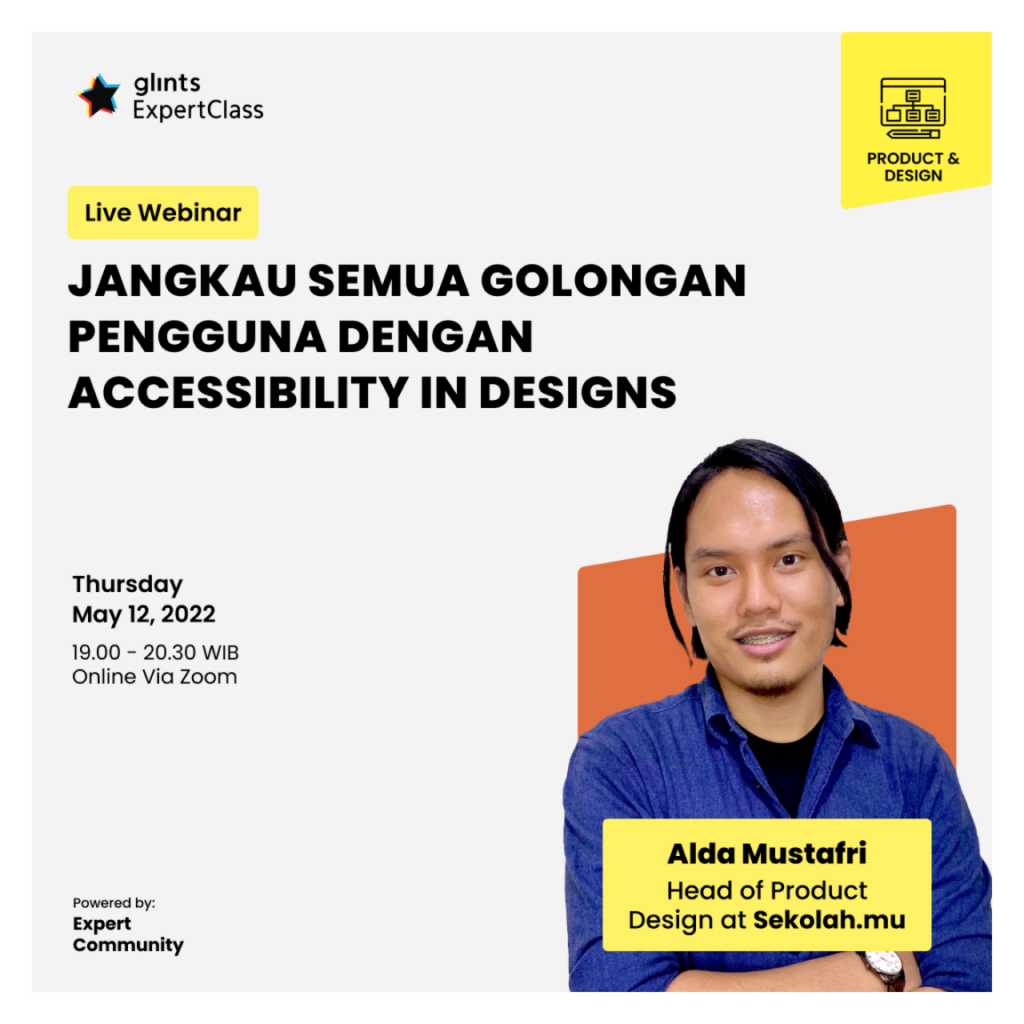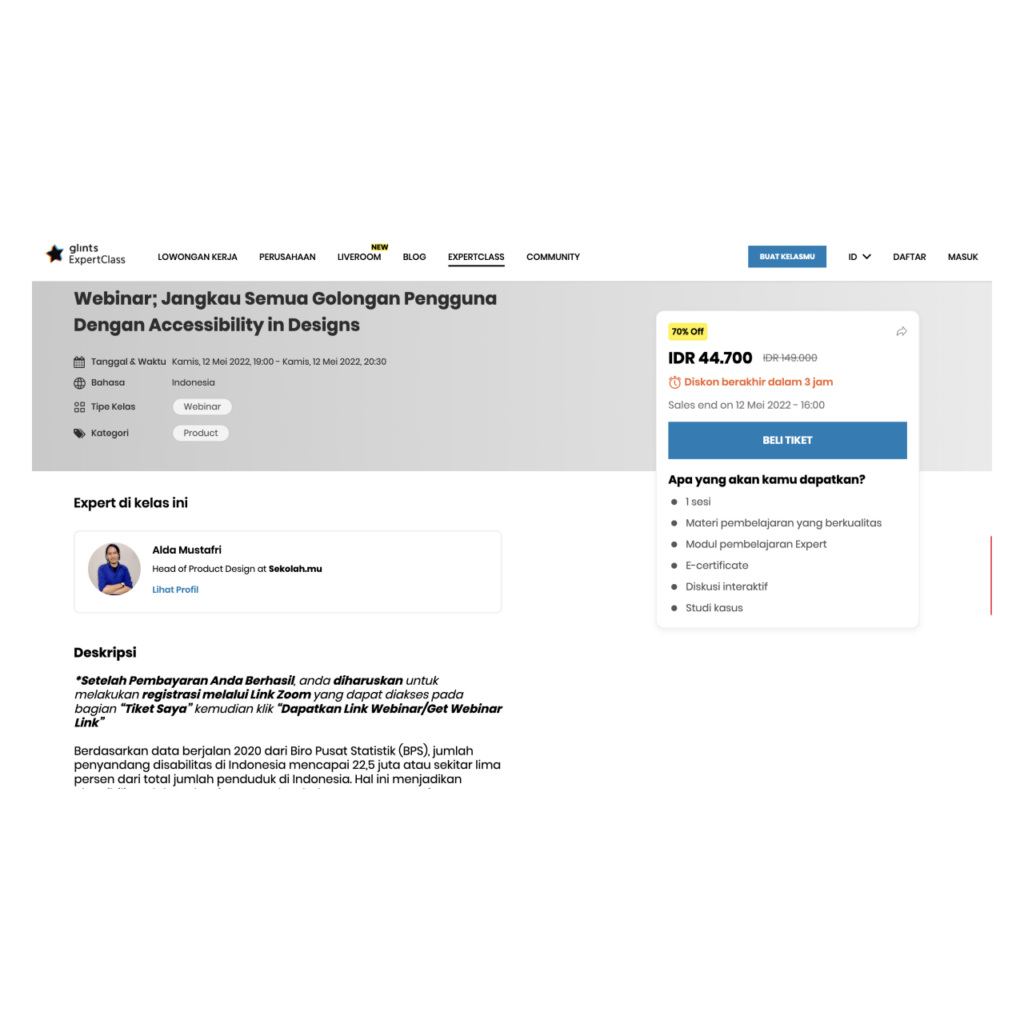On May 12, 2022, I had the privilege of being a speaker at a Glints Expert Class session conducted online via Zoom. The topic I discussed, “Reaching All User Groups with Accessibility in Designs,” holds a special place in my heart as it addresses an essential aspect of design: inclusivity. This session provided a fantastic opportunity to share insights on creating designs that are not only functional but also accessible to everyone, regardless of their abilities.
The Importance of Accessibility in Design
I started the session by emphasizing the significance of accessibility in today’s design practices. Accessibility ensures that digital products can be used by people with varying levels of physical, cognitive, and sensory abilities. It’s not just about compliance with guidelines—it’s about fostering equality and ensuring that no one is left behind in the digital age.
Key points I highlighted included:
- Understanding User Diversity: Recognizing the wide range of users, including those with disabilities, and designing with empathy.
- Guidelines and Standards: Familiarizing oneself with frameworks like the Web Content Accessibility Guidelines (WCAG) to implement practical solutions.
- Benefits Beyond Inclusion: How accessible designs enhance usability for all users, such as providing captions for videos that benefit non-native speakers or those in noisy environments.
Sharing Practical Strategies
To make the session actionable, I shared practical strategies for integrating accessibility into the design process, such as:
- Using color contrast effectively to improve visibility for users with visual impairments.
- Ensuring keyboard navigation and screen reader compatibility.
- Designing intuitive interfaces with clear labels and error messages.
- Conducting accessibility testing to identify and address potential barriers.
These strategies were illustrated with examples from my own projects, showing how small adjustments can make a significant difference in user experience.
Engaging with Participants
The session was enriched by the interactive discussions with participants. Their questions reflected a genuine interest in applying accessibility principles, such as:
- “How can we prioritize accessibility when working under tight deadlines?”
- “What tools and resources can help designers test for accessibility?”
- “How do you convince stakeholders of the value of accessible design?”
These questions sparked meaningful conversations about balancing practical constraints with the commitment to inclusivity.
Speaking at the Glints Expert Class was a rewarding experience that reinforced the importance of advocating for accessible designs. I left the session inspired by the enthusiasm of the participants and their willingness to incorporate accessibility into their work.
Accessibility in design is not just a technical requirement; it’s a mindset that prioritizes empathy and inclusivity. By making conscious efforts to design for all, we contribute to a digital world that is open and usable by everyone. I look forward to continuing this dialogue and encouraging more designers to embrace accessibility as a core value in their work.







